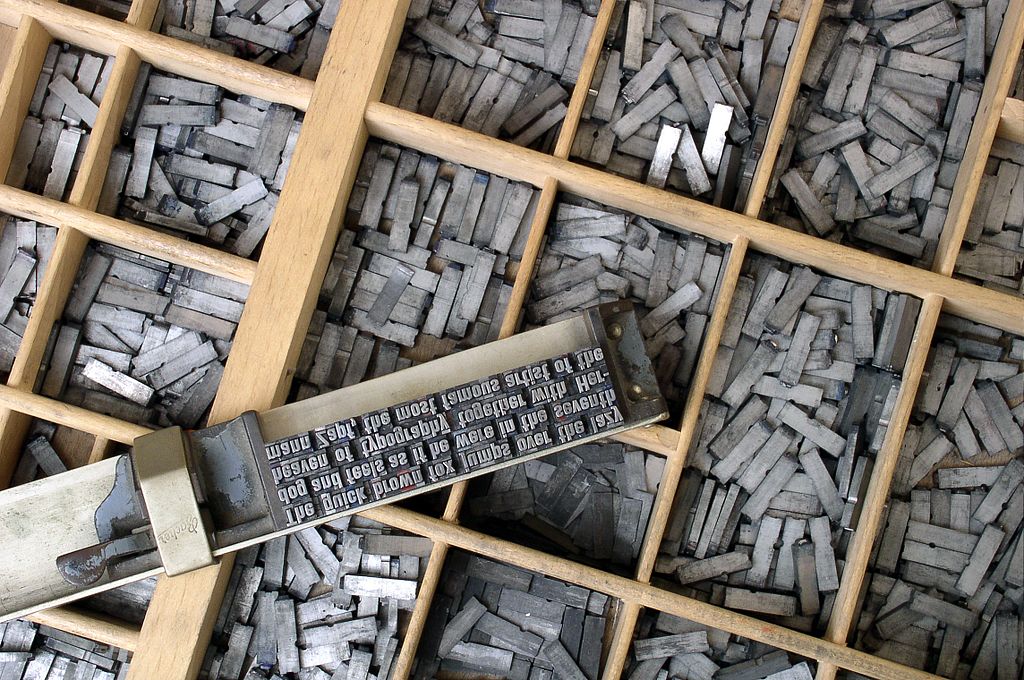Movable Type: Print Material in Special Collections
Welcome
Why does the book as a tangible, physical object still matter? How does positioning rare bound material in relation to its place in Special Collections offer new understandings of the book and authorship? How can Omeka, this exhibit building platform, remediate the textuality of Special Collections material, and how does Omeka allow students of textual studies to forge new links between a wide variety of literary texts?
Movable Type offers examples of literary material from the University of Victoria's Special Collections in relation to recent developments in textual studies, in order to present a wide range of items within their unique library context. These items include the codex, the book, and the magazine, but the material chosen by the contributors in each of these categories offers a diversity that challenges any stable definitions of bound print and manuscript material. This collections-based project highlights individual items and makes them newly discoverable, but the project also forges multiple connections across a wide variety of material to highlight the importance of placing bound collations of print and manuscript within their rich literary as well as library ecologies.
Movable Type is a collaborative project authored by UVic's first year Department of English PhD and MA graduate students, created as an assignment for Dr. Alison Chapman's English 500 (Research Methods and Textual Studies) course in the Fall of 2016, 2017, and 2018. Students were asked to choose bound print material from the collection (or, if they wished, a codex), that matched their research interests, and to present their material in particular themes: for 2016 these were "The Book" and "Authorship," for 2017 "Readers" and "Paper," and for 2018 "Networks."
The material chosen by the graduate students offers a flavour of the richness of UVic's Special Collections, ranging across such diverse material as a 1553 guide to the chivalric English Order of the Garter, John Donne's controversial treatise on suicide, a possible Gaelic forgery, Victorian periodicals, a comparison of two very different editions of Samuel Crane's The Red Badge of Courage, a copy of Sylvia Plath's Bell Jar with playful original drawings by her daughter Frieda, copies of Satre's work on existentialism annotated by the poet Robert Sward, a late twentieth-century anarchist magazine, and the Barbarian Press's edition of Shakespeare's Pericles.
Although the students freely chose their material, with some matchmaking help from the instructor, this miscellany of rare and interesting material drew together key issues of textual studies that the students developed as they shared their research, such as the role and purpose of the book as a material object, the multiple collaborations behind published texts, the significance of paratexts, the uneven cultural work of the book in creating a national canon, the widely varying mediations of authorship embodied in editions, the slipperiness and even the uncanniness of the text, and how even an anarchist magazine remains embedded in capitalist systems of production and dissemination.
The students chose to organise their exhibits chronologically, within their topics of The Book, Authorship, Readers, Paper, and Networks. But there is another route through the material: clicking on the images takes you to various student-selected tags (as a folksonomy aspect the Dublin Core Metadata), and then clicking on each tag produces a list of all material in Movable Type with the same tagged categories. While the chronological ordering gives a historical tour from the medieval codex to very recent print material, the tags produce a network of conceptual elements within current textual studies that are distributed through the miscellany of texts selected by the students. The result is to offer the reader of this exhibit a serendipitous digital tour of selected highlights of Special Collections. We offer both methods of exploring material -- historical chronology and serendipitous discovery -- for the visitor to this site, to demonstrate the embarrassment of riches in Special Collections and emerging issues in the new textual studies produced out of collaborations between scholars of textuality and digital studies.
I want to thank my Library colleagues for their invaluable help and support, in particular Matt Huculak, Lara Wilson, Lisa Goddard, and John Frederick. My Fall 2016 work study student, Renee Gaudet, diligently turned her JCURA undergraduate project into an example Omeka exhibit for the graduate students, and helped me to formulate my scaffolded guidance for the assignment. I also owe a huge debt of thanks to my graduate students for their enthusiasm, dedication, and willingness to experiment with a digital platform that was new to all of them. Finally, many thanks to the donors of material in Special Collections, without whom none of this magical work could have happened.
Congratulations to the student author of the Omeka page "The Girl's Own Paper: Supplementary Volume [1915]", which won the 2018 Peter Liddell Award for Humanities Computing.
Alison Chapman/Fall2016, Fall2017, Fall 2018.
Credits
Special Collections, University of Victoria
